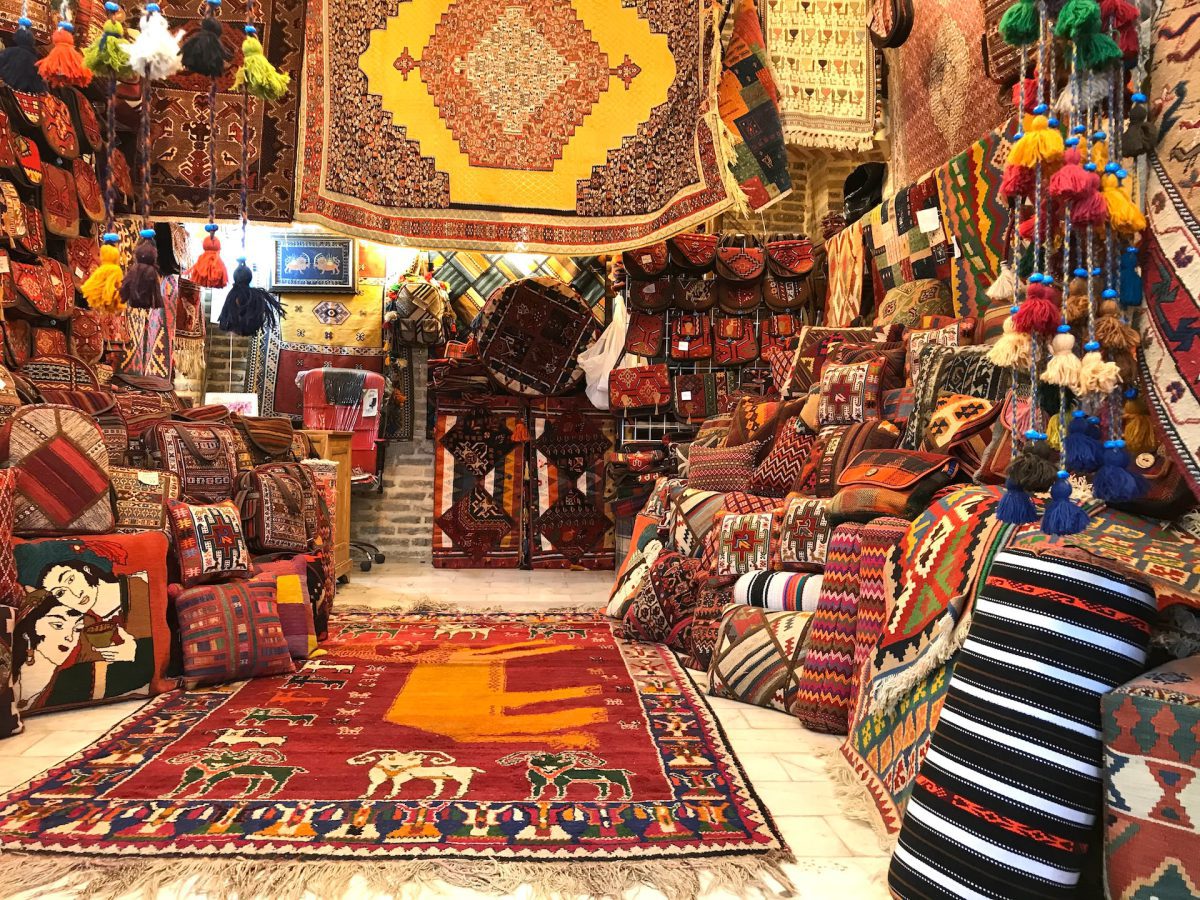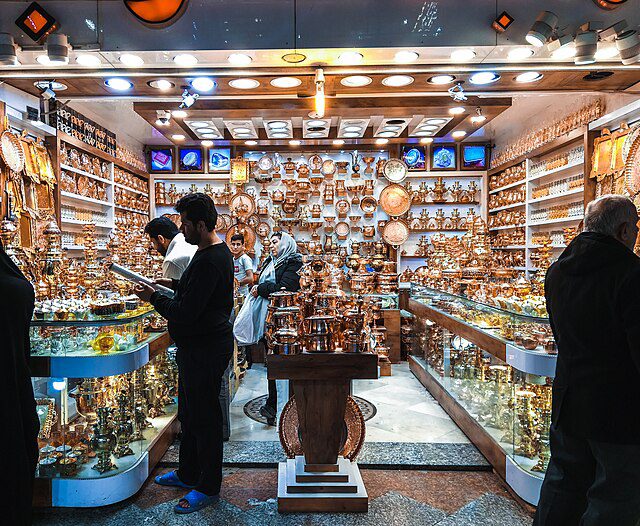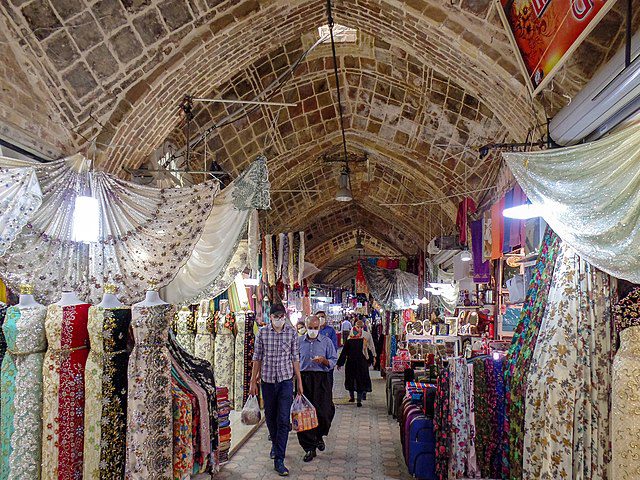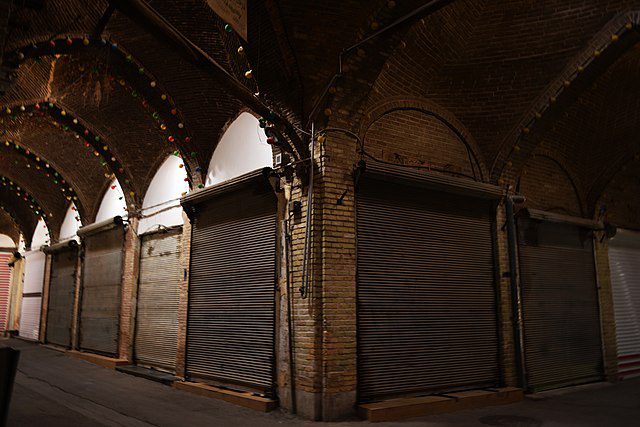Table of Contents
What is the bazaar?
Imagine a lively scene: small shops and stalls packed with colorful goods, and delightful smells all around. This is the heart of Iran bazaars, marketplaces that bring cultures together. Originating from the Persian word for town markets, bazaars are not just places to buy things – they’re a glimpse into history.
Think of narrow streets filled with vendors. In the Middle East, bazaars were often under covered walkways, creating a unique vibe. These places were more than markets; they were where people met and mingled. In the West, similar temporary markets capture a bit of this energy.
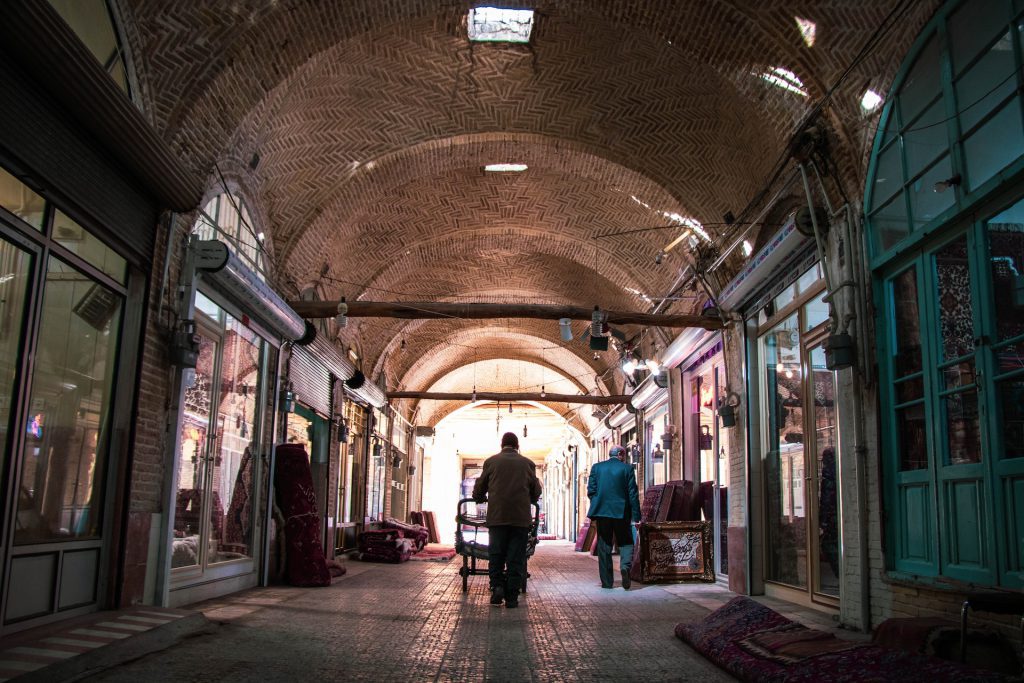
But bazaars are more than spots to shop. They’re a tribute to the people who make them vibrant – traders, artists, and money handlers. Stepping into a bazaar means entering a world shaped by generations of stories and deals. In the Middle East and North Africa, these bustling markets are called “souks,” embodying tradition.
Interestingly, bazaars aren’t tied to one place. They’re a feeling that spans the globe, connecting us through trade. Whether wandering through Marrakech’s alleys or exploring pop-up markets in Europe, bazaars show how societies have always come together to trade and connect.
The Origin of Bazaar
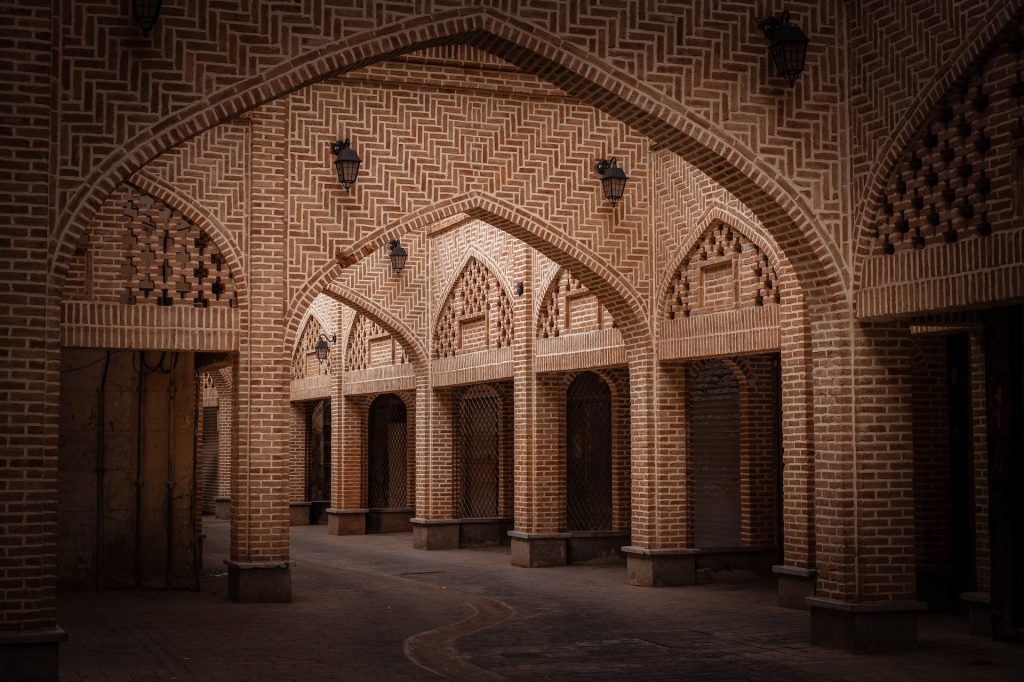
Even though we’re missing some pieces of the puzzle, we can still discover how bazaars came to be. The earliest hints point back to around 3000 BCE, when cities in ancient places like the Middle East had special areas for trading. Later, during Islamic times, bazaars shared similar things, like having someone to make sure things were fair (called the muḥtasib), and certain ways buildings were made, such as covered streets and courtyard spots known as caravanserais. Even though bazaars had some things in common, they also had their own unique flavors in different parts of the world.
Persian Bazaar
A Persian bazaar isn’t just a place to shop. It’s like a colorful adventure where you discover lots of neat things and stories. But it’s not only about buying things. When you go to a bazaar, you also get to see how people live their lives.
As you walk around, it’s not just about looking at things. It’s like stepping into a little world full of culture. The bazaar isn’t only for shopping; it’s also like a snapshot of life. You can see cool stuff like pretty carpets and shiny metal things. But it’s not just about what you see. It’s also about the stories behind them, the people who made them, and the traditions they come with.
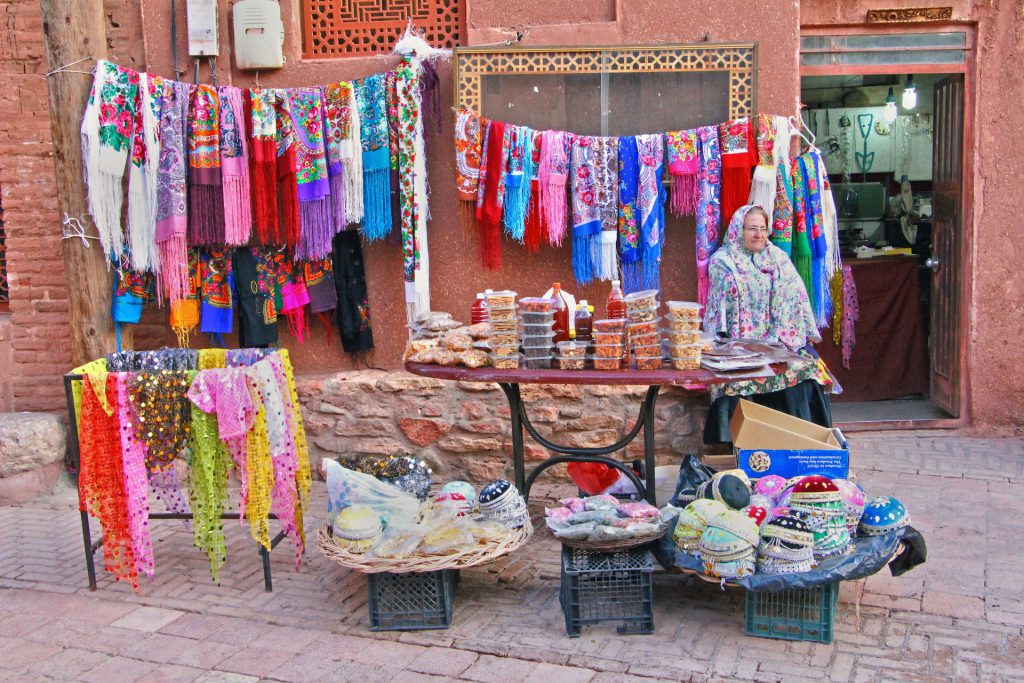
And it’s not only about things – it’s about people too. The bazaar is a place where life happens. People talk, laugh, and share stories while they sell their things. When you watch them, you can get an idea of what life is like for the local community. The bazaar isn’t just a market; it’s a piece of life you can explore. So, next time you visit a Persian bazaar, remember there’s more than just shopping. You’ll find a world of history, culture, and everyday stories.
Shopping in Iran
Imagine a shopping adventure where three wishes come true: things made by skilled hands, real uniqueness, and prices that make sense. Iran makes this wish list a reality.
Iran’s markets are like time machines, showing how things used to be made – carefully and with heart. These aren’t just things to buy; they’re stories of Iran’s past. From fancy Persian rugs to delicately painted dishes, everything has a tale to tell.
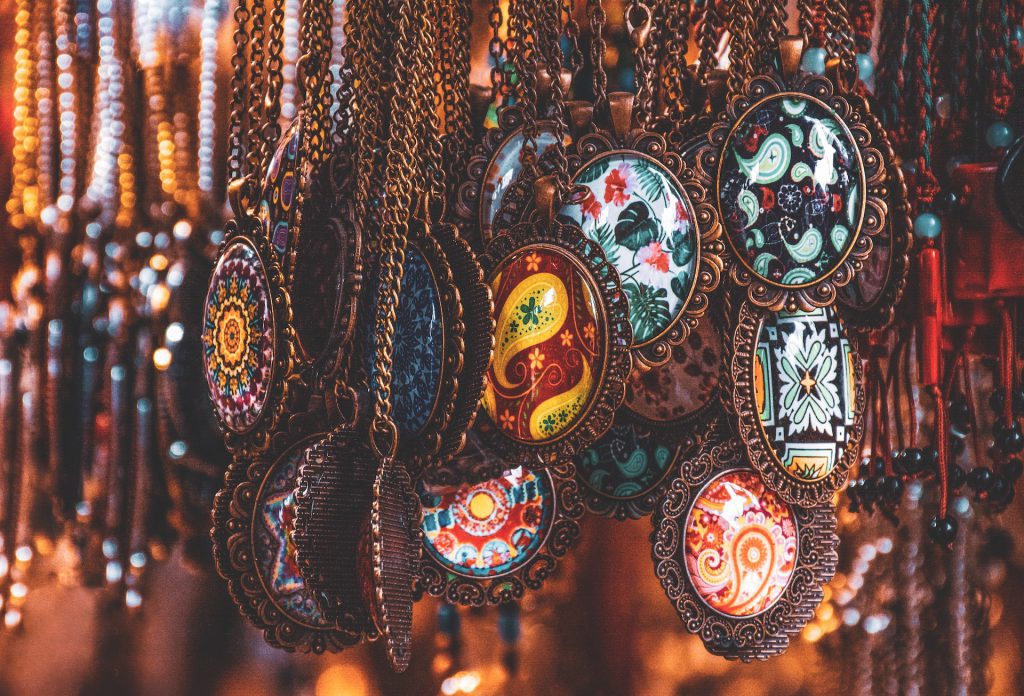
What’s cool is that Iran isn’t crazy expensive. While other places might charge a lot for special stuff, Iran keeps things fair. Walk around Tehran’s Grand Bazaar or Isfahan’s Naqsh-e Jahan Square, and you’ll find things that won’t hurt your wallet.
In a world where special crafts can be pricey, Iran is an open door. It welcomes all to enjoy real artistry, where what you buy is more than stuff – it’s a piece of Iran’s heart. So, if you’re into more than just buying, but stories too, Iran is the place to be. Explore its lively markets, take home a bit of its creative spirit, and make your shopping an unforgettable journey.
Top 15 Traditional Bazaars in Iran
If you’re eager to discover, Iran boasts several remarkable bazaars that are truly worth your visit. Here are the Top 15 Traditional Iran Bazaars:
Tehran Grand Bazaar
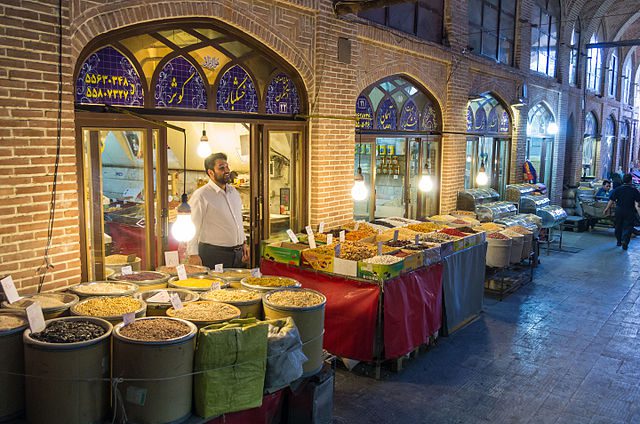
Right at the heart of the city, you’ll find the ancient Tehran Grand Bazaar. It’s surrounded by Molavi Street to the south and Panzdah-e Khordad, Mostafa Khomeini, and Khayyam streets on its other sides. Stepping into this market feels like stepping back in time.
This market isn’t just old; it’s a visual treat with its historic buildings. While it’s known for wholesale trading, you can still shop here individually. You’ll find all sorts of things, and if you’re into budget shopping, this is your paradise. Remember, it’s not just one big market – there are many smaller parts, each focusing on specific items. So, know where to go. And when hunger strikes, you’re in luck; there are fantastic Iranian eateries nearby serving up delicious local food.
Tehran’s Grand Bazaar isn’t just a market; it’s a blend of history, trade, and culture. Walking through its lanes isn’t just shopping; it’s a journey through time and a glimpse into Tehran’s essence.
Tajrish Bazaar
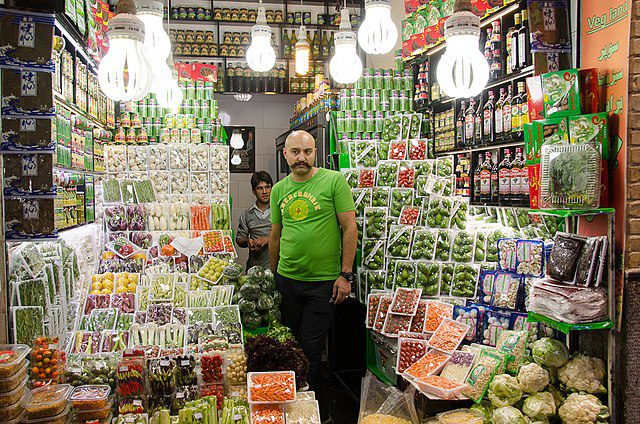
In the northern part of Tehran, you’ll find the charming Tajrish Bazaar. It’s like stepping into history. Spread between Qods Square and Tajrish Square, it’s more than just a place to buy things – it’s a piece of the past.
People argue about how old it is, but one thing is sure: the Tajrish Bazaar Tekye’h has been around for 220 years! It joins the Sarpol and Tajrish neighborhoods, and next to it is the quiet Imamzadeh Saleh (AS), a special place for people to think and pray.
Inside the bazaar’s maze of 400 shops, you’re surrounded by delicious smells and interesting things to see. Spices and nuts, pickles and yummy foods fill the air. But it’s not only about shopping – this bazaar is also a place where old traditions mix with new daily life.
After getting a makeover, the bazaar now looks a bit like Tehran’s Grand Bazaar but smaller. The sun shines on mosaic-tiled shop fronts, showing off Iran’s special way of decorating. Beyond just being a market, Tajrish Bazaar is where stories live, where the past and today come together to celebrate history, culture, and the people who connect through it.
Shiraz Vakil Bazaar
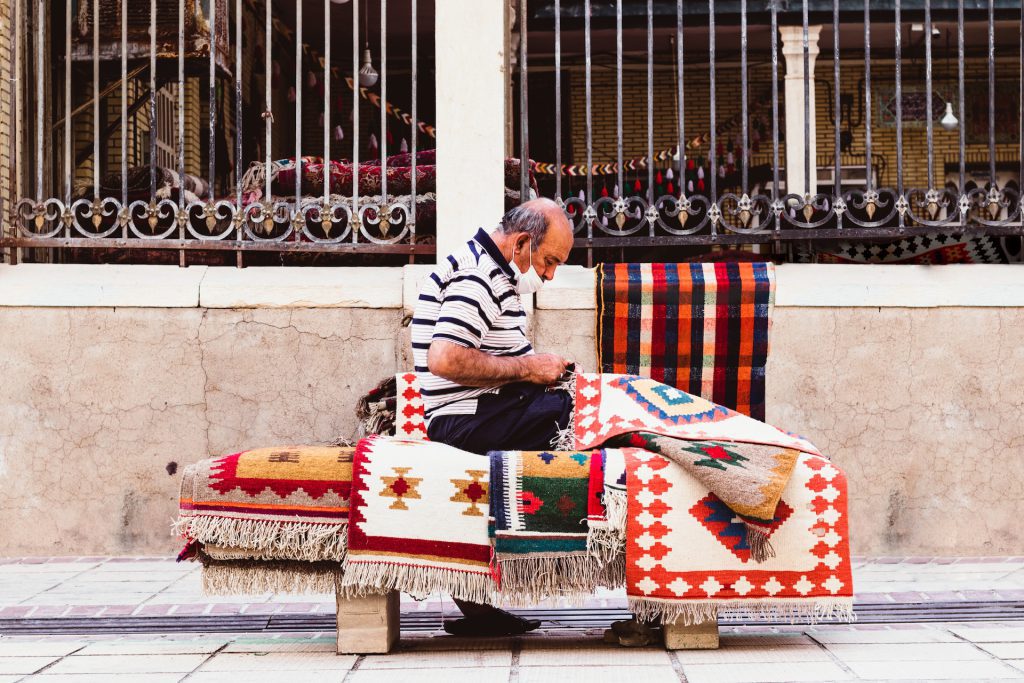
Vakil Bazaar, also called Vakil Al-Roaya Complex, is a famous old market in Iran. It was made by Karim Khan Zand and sits at the heart of Shiraz, near Shahrdari Square. Close to it are the Vakil Mosque and the well-known Vakil Bath.
The bazaar was built between 1137 and 1156 AH. In 1982, Iran said that Shiraz’s Vakil Bazaar is important for the country’s culture. When you’re in Shiraz, you can’t miss this historic spot. It’s close to many tourist places, has special architecture, a lively vibe, and things you’d love to take home like handmade rugs, beautiful stones, and souvenirs.
Vakil Bazaar is more than a market; it’s like a living history book about Shiraz. It shows how people made things in the past and it’s in the middle of the city’s energy. It’s a chance to see old traditions, and cool buildings, and get something special to remember your trip.
Bazaar of Isfahan
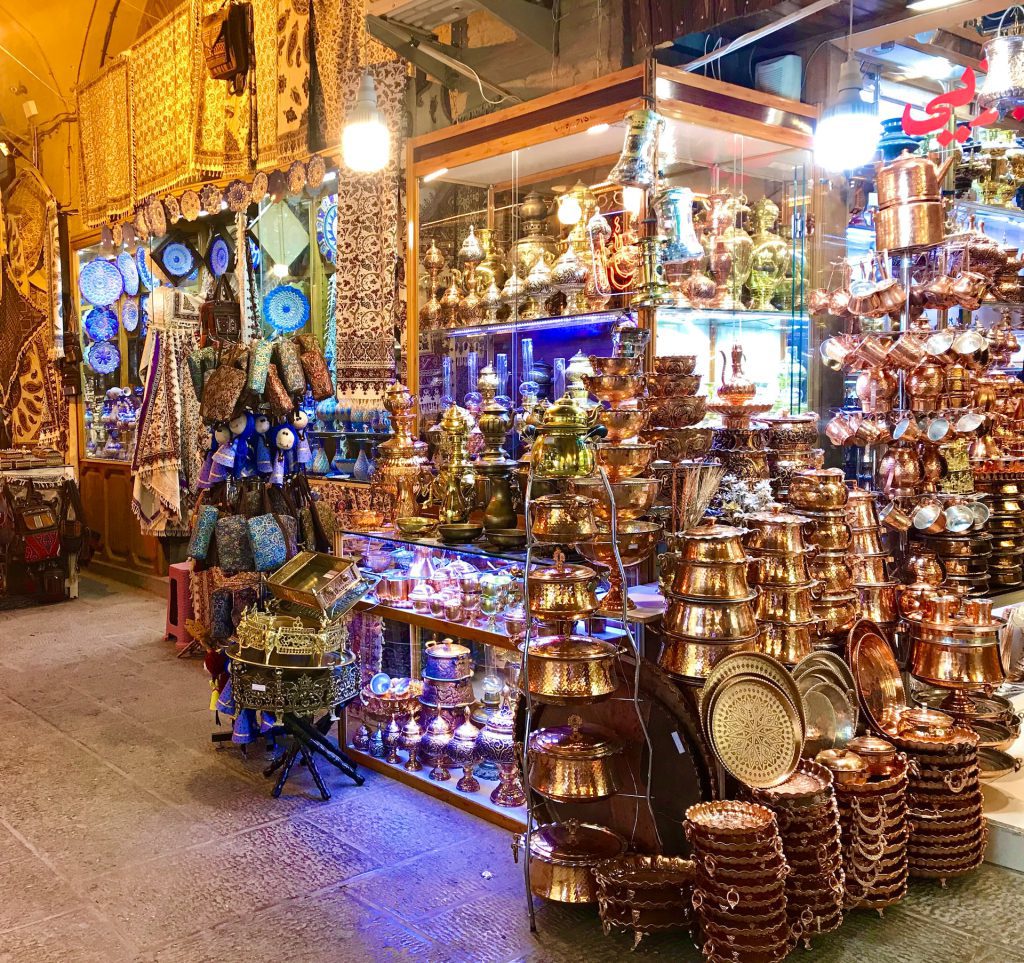
Dating back to the 17th century, the Isfahan Bazaar holds a special place in Iran’s history. It’s famous and stands as one of the oldest and largest bazaars in the Middle East. This long, arched corridor, stretching two kilometers, links the Qeysarieh gate to the Jame Mosque. You can find it in the northern part of Naqsh-e Jahan Square.
What’s unique here is that some shops have been open for over 400 years, selling the same things. This bazaar is a hub for handicrafts in Isfahan, where you can buy all sorts of stuff like spices, Persian carpets, and beautiful handmade silver jewelry.
Both the bazaar and Naqsh-e Jahan Square have earned a special spot on the UNESCO World Heritage Sites list.
Rasht Bazaar
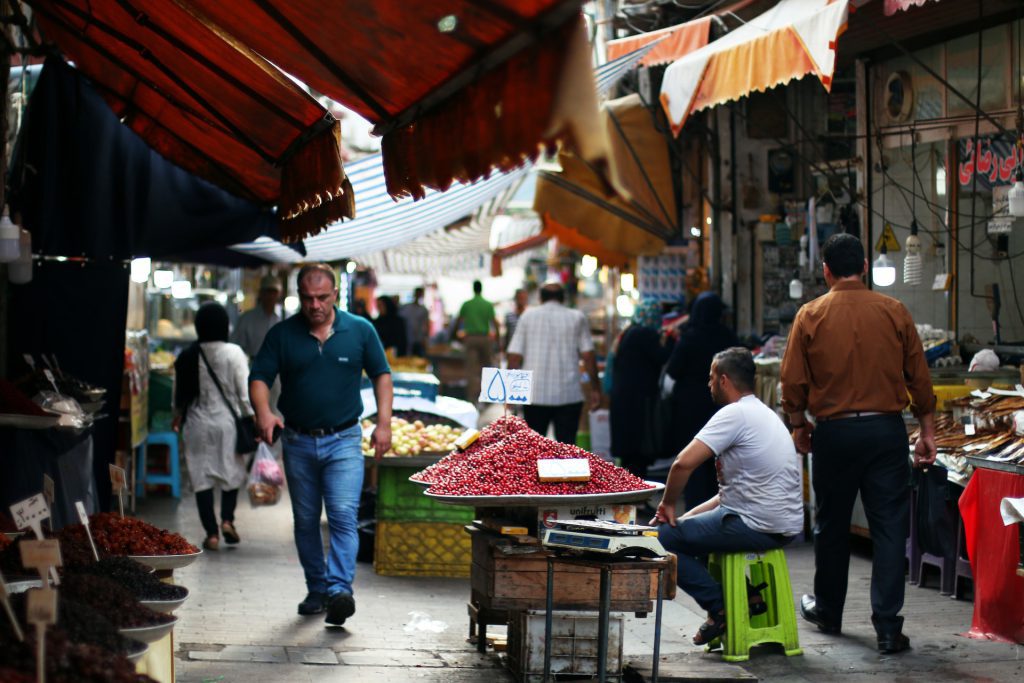
In the heart of Rasht, a vibrant city, lies a local treasure – the traditional Rasht Bazaar. This bazaar has been around since a long time ago when kings called Safavids ruled (from 1501 to 1736). What’s interesting is that, unlike other markets in Iran, this one doesn’t have a roof or domes. But that doesn’t take away its charm.
For years, Rasht Bazaar has kept its old look. People still go there to buy things like food, fish, and handmade stuff. The bazaar is really big – about 24 hectares! It’s like an open-air mall and it’s the biggest one in Iran. People love coming here because there’s so much to see and buy. The noise and the buzz around the bazaar pull you in as soon as you get close. And when you step inside, it’s like stepping into a magical world of colors, smells, and songs. The people who sell things even sing to get your attention!
Rasht Bazaar isn’t just a place to buy stuff. It’s a piece of history and a lively place where business and culture come together. It’s a story waiting for you to explore every corner.
Reza Bazaar of Mashhad
Mashhad is a city where lots of tourists and people on a religious journey go. This has made trade really busy here. One important place for business is Reza Bazaar. This bazaar is covered and goes on for 800 meters. It looks a bit old-fashioned but was actually built not so long ago, in the 20th century. It’s next to the special Razavi Holy Shrine and lots of old buildings on Imam Reza Street.
People come to Reza Bazaar to buy and sell things. It’s a place where travelers and those on a religious visit meet and exchange goods. Because of this, many hotels are around the bazaar to help these visitors. The bazaar has two levels and more than 1,700 little shops. The first level is like a colorful market with all kinds of things to buy – like shiny rings, perfumes, spices, and sweets. It’s a mix of shopping and culture, with traditional crafts like embroidery happening on the second floor.
Reza Bazaar is more than just a market. It’s a piece of history and a mix of cultures. It’s a lively place where stories are told through goods and crafts.
Bazaar of Borujerd
In Borujerd city, the big Borujerd bazaar is a big deal. Locals call it “Rasa.” It’s not just for Borujerd folks – people from nearby places come too. This market is important for trade in Lorestan, Central, and Hamedan too. When spring and summer come, tribes like Lar and Bakhtiari spend a lot of time shopping here.
There are different parts in this bazaar. There’s one for shoes (“Rassa”), another for birds and pigeons (“Bazaare Kaftar Forushha”), and more for blacksmiths (“Bazaare Chelengarha”), coppersmiths (“Bazaare Mesgarha”), locksmiths (“Bazaare Ghofl Sazha”), and even a market for Jews (“Bazaare Yahoodiha”). In the past, people did trade in special places called caravansaries. Now, these places are where Persian carpets and other crafts get sold to many places, even far away.
Tabriz Grand Bazaar
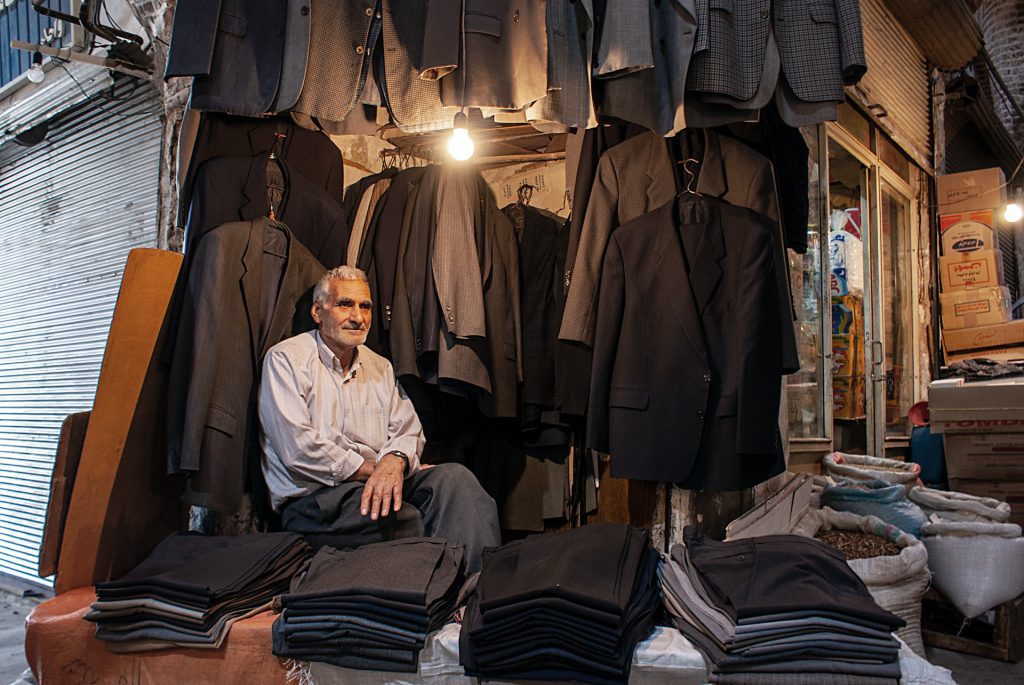
The Tabriz Bazaar is a big covered market in Iran. It’s one of the world’s largest indoor markets and is even on UNESCO’s special list. This market is different because it’s not just for buying things – it also has many important places like mosques and schools.
When you walk in, you’ll see strong buildings made of bricks, tall arches, and round roofs. These show off not just a place to shop, but also really nice Islamic architecture. Inside, there are lots of places to pray, learn, and live. The bazaar is huge, with more than 5,000 stores. People all over the world know about it because it’s really famous for selling carpets.
The Tabriz Bazaar isn’t only about shopping; it’s like a time machine that takes you back in history. It’s a mix of old-style buildings and a place where people still do business today. Exploring it means discovering the old and the new, all wrapped up in one exciting experience.
Kashan Grand Bazaar
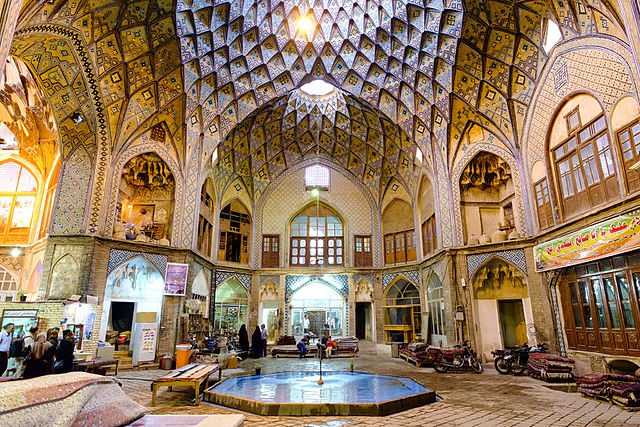
Small towns with history keep old markets alive! Kashan might not be big, but it’s lovely. And the best old-style market in Iran? That’s definitely in Kashan. When you step in, you’ll smell the sweet roses it’s famous for. Spring is the best time for this treat. The ancient Persian bazaar in Kashan is really special because it mixes old buildings and history.
Walking into Kashan Bazaar is like a rose-scented adventure. This little town’s market is a big deal. The smell of roses is everywhere, especially in spring. And guess what? Kashan’s old bazaar looks really cool. It’s a mix of really old buildings and stories from the past.
In the middle of Kashan Bazaar, you can enjoy a cup of tea that tastes like roses. Imagine that! It’s warm and cozy, just like the market around you. This special tea is a must-try when you visit Kashan.
Ardabil Old Bazaar
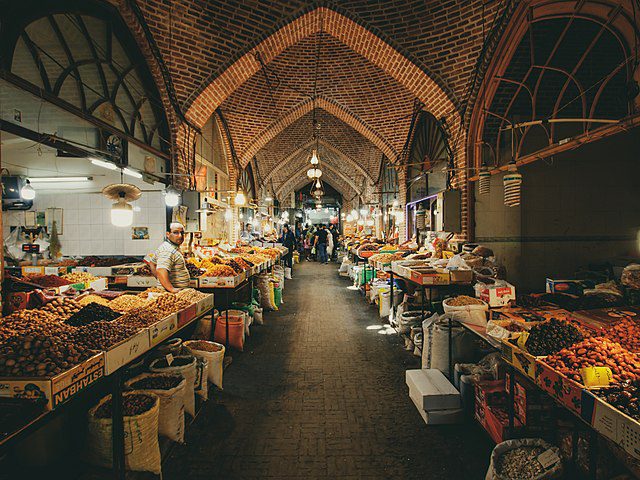
In the heart of Ardabil city, the Ardabil Bazaar Complex emerged during the Seljuk era, reflecting a piece of history. Iran’s recognition of its significance in 1985 underscored its cultural importance. During the Safavid era, the bazaar thrived, leaving a lasting imprint on the city’s story.
Imam Khomeini Street in Ardabil’s center is adorned by the Ardabil Bazaar Complex. Its traditional architecture and historical depth could soon earn it UNESCO’s acknowledgment. Beyond its aesthetic appeal, this complex encapsulates a world of experiences waiting to be embraced.
Stepping into the Ardabil Bazaar Complex is like stepping into a living heritage museum. Amidst the stalls, you’ll find not only crafts but cozy cafes where you can unwind. The bazaar resonates with the aroma of native fruits and nuts, inviting you to partake in the region’s bounty. It’s a journey that bridges time, culture, and flavors, all within this captivating market.
Bazaar of Sanandaj
Back in the 17th century, Soleiman Khan Ardalan created the Sanandaj Bazaar with a rectangular shape. During the Pahlavi time (1925–1979), the northern part was called Sanandaji Market, and the southern part was named Asef Bazaar. This bazaar is a National Heritage Site now, but only three of its original gates remain.
This covered market is one of the biggest in the country and has a mix of shops. The people you’ll see are mostly Persians, not Kurds. They wear different clothes, with some having fancy red hats and clear eyes. The men here like to wear baggy pants, often with a special turban-made scarf. Watch the crowd move around and notice the beautiful jewelry and amazing kilims.
Bazaar of Saqqez
One of Rojhalat’s old spots, this bazaar might have started during the Zandieh time. It got fixed up again during Safavid and Qajar times using parts from caravanserais and Iran bazaars. There’s even a piece of the Jewish Bazaar and Tajvanchi Caravanserai in there. They’re researching and working on it to bring back old parts of the bazaar like Domenareh Mosque, caravanserais, Haj Saleh Hammam, and building a history museum.
The bazaar is split by a covered river called Vali Khan. It’s between Sarpacheh Bazaar (now Fakhr Razi Street) and the Castle Bazaar. Saqqez Bazaar is like many small bazaars joined together, each one selling different things.
There’s the “Bazaar of Bala” with fancy stuff, and the “Bazaar of Paein” with regular things like clothes, wedding stuff, and farming supplies. There’s also a Jewish market that’s now for making clothes, and the Kazakhkhaneh market that tourists often visit.
Bazaar of Shahroud
Right at the heart of Semnan province’s Shahroud, you’ll find the Shahroud Bazaar, a throwback to the Qajar times. This special place was crafted to fit the desert climate of the region, and that’s why it’s got a roof and ceiling.
The Shahroud Bazaar has two main paths and five entrances. Inside, you’ll find a lot – a mosque, a place for travelers to stay (caravanserai), a spot to store water, a school, and even a bathhouse. This Persian Bazaar is a part of Iran’s heritage, officially recognized. It’s a one-stop shop, with everything from fruits and nuts to clothes and those beautiful Iranian rugs.
Fish Bazaar of Bandar Abbas
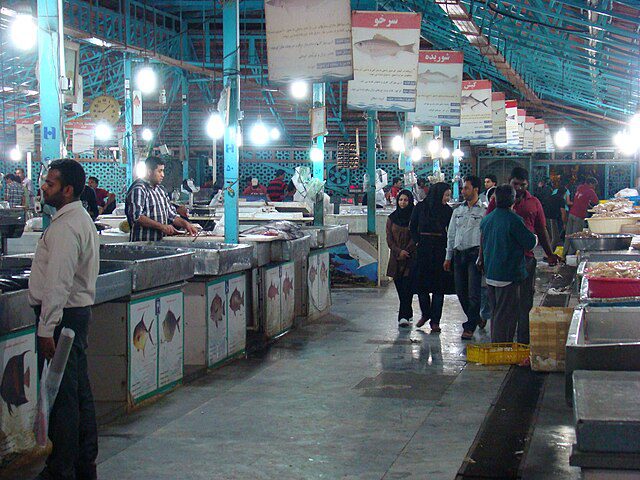
Bandar Abbas, a city in the south of Iran, has many cool things to see. One of the best spots is the fish market. It’s on a road called Sayadan Boulevard that connects the dock to the city.
The fish market is pretty new, built about ten years ago. It’s got a big parking area with two floors, and it’s about as big as 11,000 square meters. Lots of fishing businesses come here to trade their stuff.
When you go inside the market, you can watch fish sellers. They’re busy cleaning and selling fish under these special shelters called Kapars. You’ll see all sorts of fish from the Persian Gulf, and they look so fresh and tasty that you’ll want to buy a bunch.
The Persian Gulf has all kinds of colorful fish, and you’ll see them all here in the market. It’s a lively place where the sea meets the city.
Chabahar Bazaar
Chabahar is a really pretty part of Iran, and it’s special because it’s close to the Oman Sea. That means it gets a lot of moisture, making the weather different. This city has nice beaches and is also a free trade zone. There are new malls and old markets here.
In the old markets, you can find cool things like crafts, spices, and herbs that can be used as medicine. You can also try tasty local foods. These markets are colorful, and lots of the sellers are women. Some can paint henna on your hand or show you how they make stuff like mats and jewelry.
Then there are the new malls in Chabahar. They’re great if you want to buy things like clothes, stuff for your home, or beauty things. These malls have all kinds of stuff, and it doesn’t cost a lot. That’s why many tourists like to shop here. Some of the popular malls are Pardis Shopping Center, Sadaf Shopping Center, Silk Shopping Center, Salehyar Shopping Center, Ferdows Shopping Center, and Tis Commercial Complex.
Best places for shopping in Iran
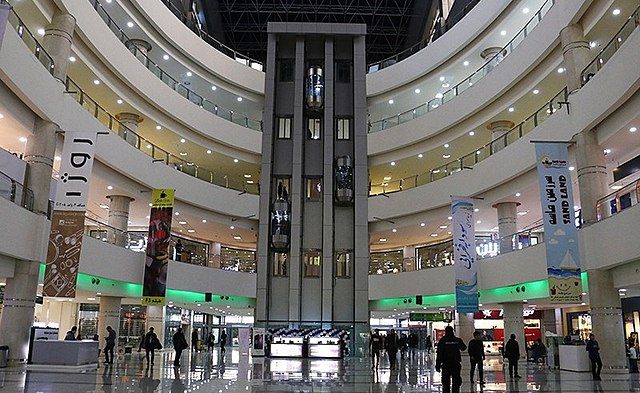
We’ve just discovered the top 15 traditional Iranian bazaars. When you’re shopping in Iran, there’s more to explore than just the bazaars. The country has different kinds of shopping places, and one of them is the modern mall. These malls are like stylish stores you might find in other countries. They have Iranian brands for you to check out, and the prices are already set, so you don’t have to haggle like you would in the bazaars. These malls have cool air and a neat vibe. You can find lots of stuff here, like clothes and gadgets, made by Iranian brands that people like. It’s a different way of shopping that’s easy and comfortable.
Even though bazaars and malls are popular, don’t forget about shopping on the streets. It’s a bit different and exciting. You can find street vendors selling things at lower prices than the big places. The things might not always be super fancy, but they’re real and special in their own way. Imagine walking by stalls filled with colorful fabrics, smelling spices, and handmade crafts. It might not be as fancy as the malls or as organized as the bazaars, but it’s a chance to find cool things and meet people who make them. Street shopping is like a mini adventure where you can get to know Iran’s everyday life.
In Iran, shopping is more than just buying things – it’s like discovering the country’s stories, traditions, and all the cool stuff that comes with it.
FAQs about Top 15 Traditional IranBazaars
Q1: What is the bazaar?
A1: A bazaar Iran is a marketplace where small shops and stalls offer a variety of goods, reflecting cultural diversity and historical significance. They are not just places for buying items but also provide insights into local history and traditions.
Q2: What is the historical origin of bazaars?
A2: Bazaars have origins dating back to around 3000 BCE in ancient Middle Eastern cities. They evolved during Islamic times with shared features like fairness oversight and distinctive architecture. Different regions added their unique flavors to bazaars.
Q3: What distinguishes a Persian bazaar?
A3: A Persian bazaar is more than a shopping destination. It offers a cultural adventure where visitors can explore various goods and stories. It provides insight into daily life, traditions, and crafts of the local community.
Q4: What is special about shopping in Iran?
A4: Shopping in Iran offers a blend of craftsmanship, uniqueness, and affordability. Iran’s markets showcase handmade goods, from Persian rugs to painted dishes, all carrying stories of the country’s past. The prices are reasonable, making it accessible for all.
Q5: Can you list some notable traditional bazaars in Iran?
A5: Some of renowned bazaars in Iran include: Tehran Grand Bazaar, Tajrish Bazaar, Shiraz Vakil Bazaar, Isfahan Bazaar, Rasht Bazaar, Reza Bazaar, Borujerd Bazaar, Tabriz Old Bazaar, Kashan Old Bazaar, Ardabil Old Bazaar, Sanandaj Bazaar, Saqqez Bazaar, and Shahroud Bazaar, Fish Bazaar, and Chabahar Bazaar.
Explore Top 15 Traditional Bazaars in Iran with Customized Tours
If you’re an avid traveler with a penchant for experiencing the rich tapestry of culture, history, and commerce, a journey through Iran’s Top 15 Traditional Bazaars is an absolute must. These bustling marketplaces offer an authentic glimpse into the heart of Iranian heritage, featuring an array of intricate handicrafts, aromatic spices, vibrant textiles, and an atmosphere that’s as timeless as it is enchanting.
While solo trips can be thrilling, navigating the labyrinthine alleys and absorbing the full essence of Iran’s Traditional Bazaars can be quite the undertaking. That’s where To Iran Tour comes in. We specialize in crafting customized tours that cater to your preferences, ensuring that your journey through Iran’s Traditional Bazaars is not only seamless but also deeply personalized.
Our Iran tours and travel packages are designed to weave together the cultural, historical, and artistic threads that make up the fabric of Iran’s Traditional Bazaars. With our expertise, you won’t just wander through these markets – you’ll delve into their stories, interact with local artisans, and truly grasp the significance of each item you encounter. Join us and explore Iran’s Traditional Bazaars like never before. Your adventure awaits!

